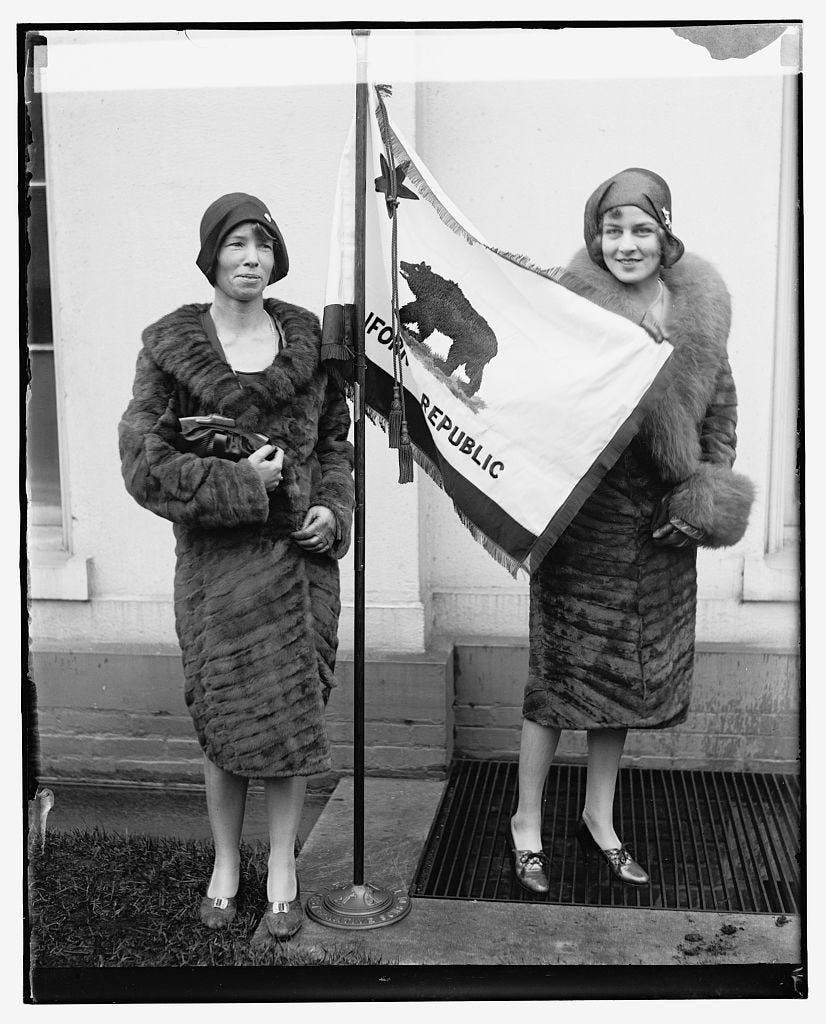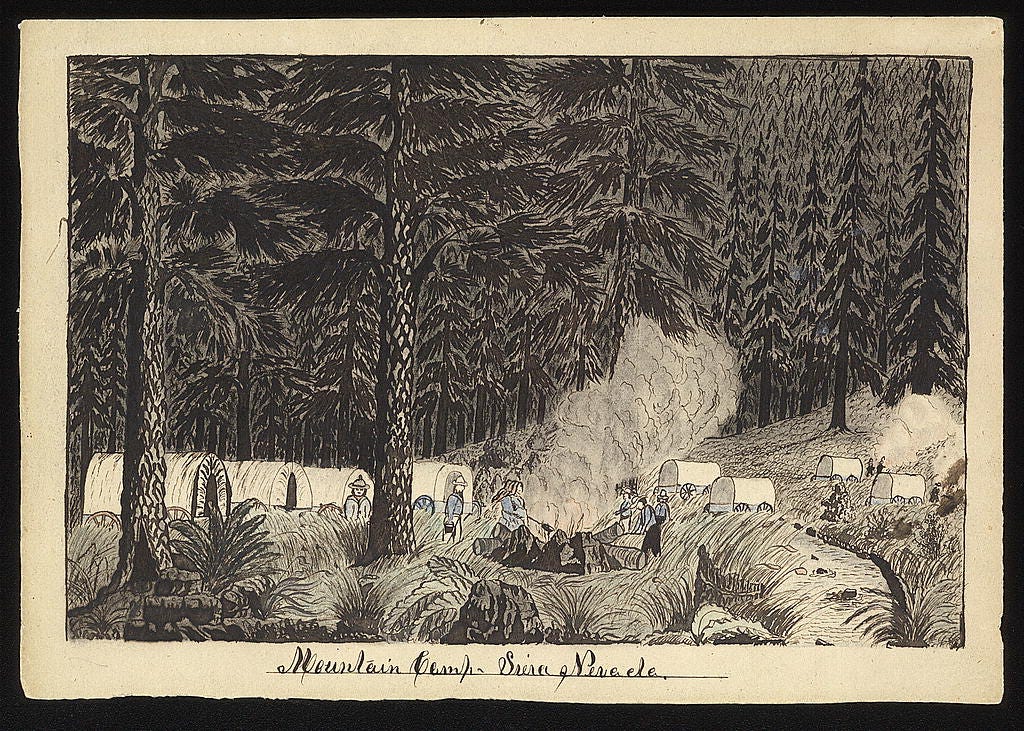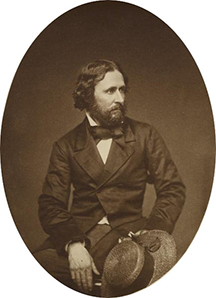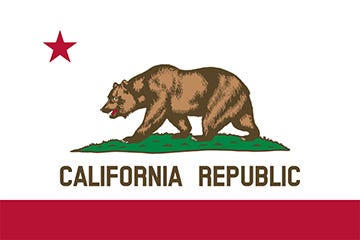What Steps Did California Take to Apply for Statehood? When Was California Admitted?
The Problem with California'south Application for Statehood
Past Robert 50. Harrison

In 1849 California applied for admission to the Us as the 31st state. With the golden rush underway the territory'southward value was well known across America. Moreover, statehood had the enthusiastic back up of the growing number of American settlers in California. Ane would have expected prompt action past the national government of the application for statehood from a territory every bit rich as California — a state that met all the legal requirements. What then was the trouble that provoked a heated contend in Congress and delayed California statehood?
As information technology turned out, California's application got entangled with the slavery dispute between northern and southern states. In the early 19th century the country functioned nether provisions of the 1820 Missouri Compromise. The intent of the Compromise was to maintain an equal number of costless and slave states. California, following its Mexican heritage where slavery was abolished in 1829, canonical the prohibition of slavery at a Constitutional Convention. Nonetheless, the involuntary servitude of ethnic Californians at the Castilian missions was not taken into consideration past the State's governing trunk. In the 1840s only a very few in California held Blackness African slaves. From the vantage signal of the Federal Authorities, a new "gratuitous" Land of California would upset the balance between free and slave states.

To maintain the balance, members of Congress from the south called for dividing the new State into one gratis and one potential slave state. Under this proposal the partitioning would have been equally specified in the 1820 Compromise at parallel 36 degrees thirty minutes (36.5 degrees North Latitude). The line was set by extending the southern boundary of the Land of Missouri due west to California. The Compromise allowed Missouri to be admitted equally a slave land but required all new land proposals north of the line to exist free from slavery while those to the south would take the option of adopting the practise.

Had this proposal been adopted, the line would have divided California from the Pacific Bounding main at Carmel Highlands in Monterey County, across the Cardinal Valley 15 miles south of Fresno, over the Sierra Nevada Mountains 5 miles south of Mt. Whitney and through Death Valley 2 miles due north of the National Park Headquarters to the Nevada border. In 1850 the population north of this line was far greater than that to the south. But today information technology would mean that over 60% of California'southward population would live in the Land of S California. Further, under the provisions of the 1820 Missouri Compromise, South California would have had the option of permitting slavery.
The anti-slavery view of about California settlers was clearly expressed in the Feb 22, 1849 edition of the Daily Alta California: "The majority — four-fifths, nosotros believe — of the inhabitants of California are opposed to slavery. They believe information technology to be an evil and incorrect…and while they would rigidly and faithfully protect the vested rights of the S, they deem it a high moral duty to preclude its extension and aid its extinction past every honorable means."
California's application for statehood was set in motion with the military defeat of United mexican states in 1848. On February 2, 1848 the Treaty of Guadalupe Hidalgo conveyed a great department of Mexican territory in the American southwest to the United States, including the surface area of today's California. Prior to formal annexation, Americans had been establishing a presence in California. While most of the territory's early colonizers were of Mexican or European origin, by the 1840s scores of American immigrants had significantly altered California's demographic picture.
In September 1849 California held its first Constitutional Convention. The coming together in Monterey was attended by 48 delegates, just six of whom were born in California, and nigh of whom were from states e of the Mississippi River. A resolution unanimously adopted by the Convention re-emphasized the opposition to slavery: "Neither slavery nor involuntary servitude, unless for punishment of crimes, shall e'er be tolerated in this Land." The Constitution was approved past the electorate on November thirteen, 1849. The vote was 12,061 in favor and just 811 against.

In accord with the Constitution, a California State government was formally established on Dec 20, 1849. No precedent existed for the germination of a State government prior to an enabling act by Congress. Notwithstanding, Californians decided to keep and send representatives to Washington to petition for admission to the Spousal relationship. In March 1850 California's elected Senators, J. C. Fremont and Due west. K. Gwin, along with Representatives Gilbert and Wright, submitted copies of the new Constitution and requested, "In the name of the people of California, the access of the Land of California into the American Wedlock."

The arrival of the California representatives caused a near panic amidst members of Congress from the Due south. They saw the imminent prospect of losing the richest territory gained in the victory over Mexico. Henry Clay, Senator from Kentucky, was determined to find a solution that would preserve the union. In 1820 he had fashioned the Missouri Compromise. And once again, 30 years later, he resumed work on the thorny result of maintaining a residual between slave and free states. On January 29, 1850 Clay introduced a fiercely debated compromise. Clay's proposal ultimately became the Compromise of 1850. Information technology included several statutes:
- An Act entitled "An Act respecting Fugitives from Justice, and Person escaping from the service of their Masters." This act of the Compromise was said to be necessary to attract enough southern votes to secure passage of Dirt'south entire proposal. "The Fugitive Slave Act", as information technology was also known, was responsible for a reign of terror throughout the nation as Africans, both costless and escaped slaves, were rounded up and, without trial, returned to slavery in the due south.
- An Act to suppress the Slave Trade conducted in the District of Columbia.
- An Act to establish a Territorial Authorities for Utah.
- An Human activity establishing the boundaries of the State of Texas.
- An Act for the Admission of the State of California into the Union every bit a free state.
The bill that fabricated California the 31st country was signed into law by President Fillmore on September 9, 1850. The give-and-take of statehood was brought to California on the mail steamer Oregon. The Oregon did not reach California until October 16th at San Diego and on the 18th in the Bay Area. Upon reaching the Bay the Oregon was first required to submit a mission report at squadron headquarters in Sausalito. The interruption to report enabled some residents of Marin County to exist the outset in the Bay Area to know California was granted statehood on September ninth.
As the Oregon entered San Francisco Bay, newspapers from the east were thrown overboard, recovered from the h2o and brought to the offices of the Daily Alta California where an "Extra" was immediately published with the news of California's entrance into the union. Celebrations broke out in Washington when the statehood bill was passed and half dozen weeks later with the arrival of the news to California. On October 19, 1850 the Daily Alta California expressed it this way:
"Nosotros have never seen then full general and joyous an excitement, nor annihilation comparable to it, as that which has resulted in this city from the news received here yesterday."

Source: https://medium.com/anne-t-kent-california-room-community-newsletter/the-problem-with-californias-application-for-statehood-e326b81012cc
0 Response to "What Steps Did California Take to Apply for Statehood? When Was California Admitted?"
Post a Comment